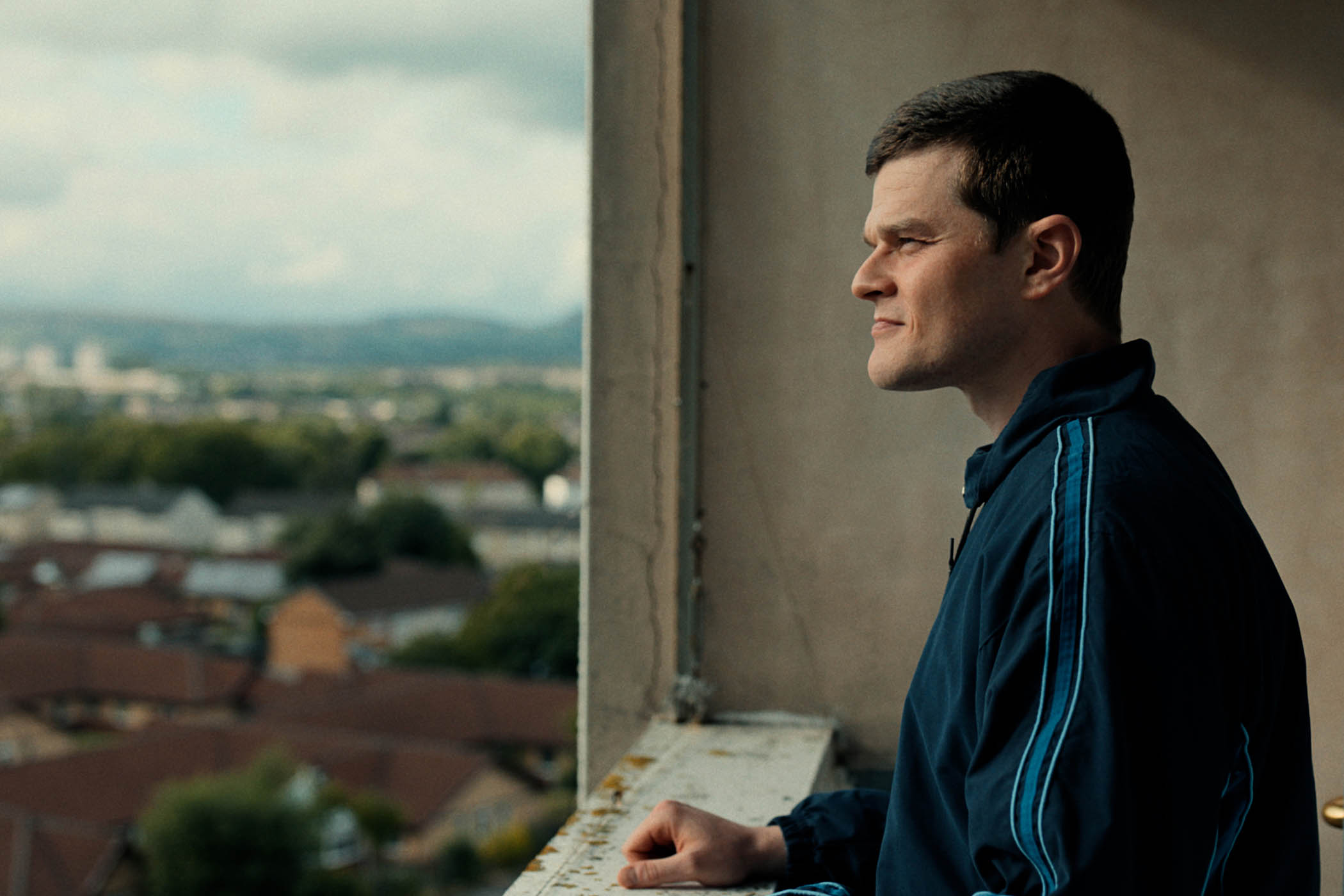It’s been quite a journey for Tourette syndrome campaigner John Davidson: from schoolyard beatings and police interventions to official honours and the opportunity to bellow “Fuck the queen” in the presence of Elizabeth II herself. But if public and institutional awareness of his condition has dramatically improved since his childhood diagnosis, this is in part thanks to the tireless efforts of Davidson himself, who was the focus of the acclaimed 1989 BBC documentary John’s Not Mad, and went on to dedicate himself to educating the wider world about Tourette syndrome.
This warm, respectful and crowdpleasing biopic by Waking Ned Devine and Nanny McPhee director Kirk Jones gets into the mind of the man who changed the way we think about neurodiversity.
After a brief, near present-day prologue, the picture kicks off with a poignant glimpse of Davidson’s early life in grey-tinged 1980s Galashiels in the Scottish Borders. Played as a youngster by terrific newcomer Scott Ellis Watson, John is a chipper, sporty kid, brimming with confidence and poised on the brink of the next stage of his life, at “big school”.
Then the tics start. Involuntary blinks, head twitches, spasmodic jerks and shouts. Even before the volcanic, scalding blurts of swearing kick in, it’s enough to mark John out as different. And schoolchildren are pack animals; they bare their teeth and set upon anyone who doesn’t quite fit. Watson’s expressive physicality captures the change in the child: his self-confidence and swagger vanishes; he folds in on himself like a piece of origami.
An outcast, even within his own family, John is banished from the dining table and told by his stony mother (Shirley Henderson) to eat his dinner sitting on the floor facing the fireplace. On the menu for family mealtimes: shame, recrimination and freighted silence when an anguished John asks whether he is responsible for the breakdown of his parents’ marriage.
The stress and guilt is overwhelming. John takes himself to the local river – the one place, as a keen angler, he can still find a kind of peace – and launches himself facedown into the water. It’s an achingly bleak moment, this image of a child so lonely, anxious and inconsolable that he can’t conceive of a future worth living for. But the unexpected pleasure of this film is that Jones balances the melancholy with numerous scenes of irrepressible, irreverent comedy.
Jones, who also wrote the screenplay, directs with a light touch. Moments of agitation for the central character – when John moves into a new flat, for example – are reflected in camerawork that becomes a little more skittish and jittery. John’s early childhood is edited with a buoyant, brassy energy and cut to the pulsing rhythm of New Order’s Blue Monday. But for the most part, this is not assertive or showy film-making. It recognises instead that its main assets are the extreme likability of the central character and the exceptional performances that bring him to life. These low-key directing decisions leave space for the actors to fully explore the role.
Playing John as an adult, Robert Aramayo is remarkable. Crucially, it’s a performance that doesn’t just stop at Tourette syndrome; it explores the decent, earnest and funny man beneath the condition. Aramayo embraces the mortifying humour in John’s compulsive outbursts; his expression is comically rueful, even as he blurts out the worst possible words that his skittishly overactive brain can force upon him. John’s life was improved immeasurably by a few people who, early on, saw beyond his condition. Dottie Achenbach (Maxine Peake) offered him a home when his relationship with his family became uncomfortably strained; caretaker Tommy Trotter (Peter Mullan) looked beyond John’s unorthodox tea-making and offered him a job.
Beyond all the tragicomic plot peaks and troughs, the picture argues, a little didactically, that John’s Tourette syndrome was never the main issue. His real problem, according to the film, was always the ignorance and hostility of other people. It’s a neat and tidy moral message that puts the onus on the audience to leave the cinema better informed and more tolerant of difference in all its forms. I Swear’s robust, feelgood credentials are drawn in part from the fact that we do just that. Like John himself, I Swear has the capacity to touch lives.
Photograph by Studio Canal
